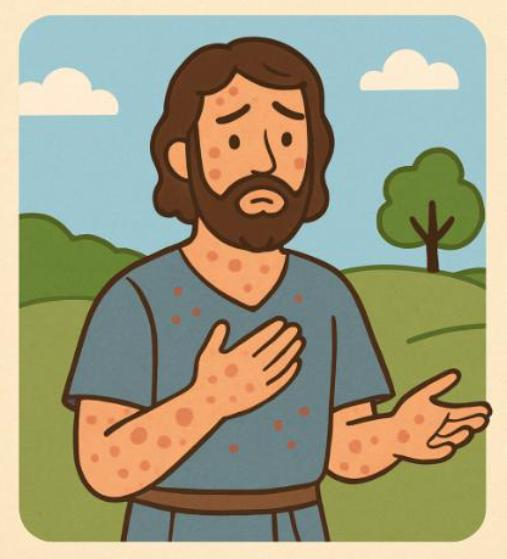Healing Leprosy

ADAPTED FROM HIS AUDIO SHIUR ON SICHOS HARAN 149E
Tzara’at and the Power of Speech
As the Gemara explains, a metzora — someone afflicted with leprosy — remains tamei (spiritually impure) while he is still a leper. Once he is cured, he becomes tahor (pure) and must bring a special offering: two birds.
Why specifically two birds? Because the word metzora hints at motzi ra — “one who brings out evil” — referring to the sin of lashon hara (speaking negatively about others), which caused his affliction. He was punished because he defiled a sacred power — the power of speech, the power of voice — that was given to him as a holy gift from Heaven.
Now, through his purification, he brings two birds — creatures known for their constant chirping — to symbolize both his misuse of power of speech that was given to him from Heaven and his new opportunity to use his voice in a pure, elevated way.
Purifying the Defiled Voice
Because the metzora defiled the holiness (kedushah) of the voice (kol) — a power given to him from Heaven — he is required to bring a korban, an offering that symbolizes purity. The birds he brings represent this purity: their chirping, their simple and pure sounds, are likened to pure tefillah (prayer) — the way birds naturally sing praises to Hashem in innocence and sincerity.
The Gemara explains: Let these two birds, whose kolot (voices) are pure, come and atone for the metzora, whose own voice had become tamei (defiled). Thus, the two birds symbolize the restoration of the purity of speech.
More deeply, these two birds also represent something greater: they correspond to the kruvim — the two angelic figures that stood on either side of the Aron Hakodesh (the Holy Ark) in the Beis HaMikdash.
The Voice Between the Two Kruvim
Whenever Moshe Rabbeinu received prophecy (nevu’ah) from Heaven, the voice would emerge “from between the two kruvim” (kol hayotzei mibein shnei hakruvim), as described in the Torah. It was from this sacred space — between the kruvim — that Divine communication would emanate, whether in the Mishkan (the portable sanctuary) or in the Beis HaMikdash.
The Churban and the Separation of the Birds
When the Churban (destruction) of the Beis HaMikdash occurred, it caused the separation of the two “birds” — symbolizing the breakdown of the connection between Heaven and Earth. Prophecy ceased, and the Shechinah (Divine Presence) went into exile along with the Jewish people.
The Shechinah is referred to as Rachel, as it says, “Rachel mevakah al baneha” — “Rachel weeps for her children.” It is important to note that the verse does not say Rachel “bochah” (simply cries), but “mevakah” — she causes others to cry. Her weeping is so deep and powerful that it stirs the hearts of others to weep as well.
Joining the Shechinah at Chatzot
There is a special mitzvah to rise at midnight (chatzot) and join in mourning the destruction of the Beis HaMikdash. This is done through Tikkun Chatzot — heartfelt prayers and lamentations said at that sacred time.
Those who rise and cry with the Shechinah in her sorrow are promised a great reward: they will draw a chut shel chessed — a thread of Divine kindness — that will bless their entire day. They will also be among those who will ultimately rejoice in the future comfort and redemption.
As the Prophet assures us:
“Hold back your voice from weeping,”
because “there is a reward for your efforts,”
and “your children will return to their borders.”
The final ge’ulah (redemption) is on its way.
The Consolation of the Birds
The two birds — representing the Shechinah and Am Yisrael — will be reunited. The Shechinah will return to her rightful place with the rebuilding of the Beis HaMikdash, and joy will once again fill the world.
Thus, the two birds symbolize not only the restoration of the purity of speech, but also the healing of the separation between Hashem and His people. The weeping of the Shechinah — “Rachel mevakah al baneha” — continues until the final redemption.
Those who mourn for the destruction, those who join the Shechinah in her pain, will be privileged to rejoice with her when the Beis HaMikdash is rebuilt, and the voice of prophecy and purity will once again be heard in the world.
That is why the place of mourning — the Kotel, the Western Wall — is known as the Wailing Wall. Those who are zocheh to cry there over the churban will be zocheh to the simchah, l’asid lavo.